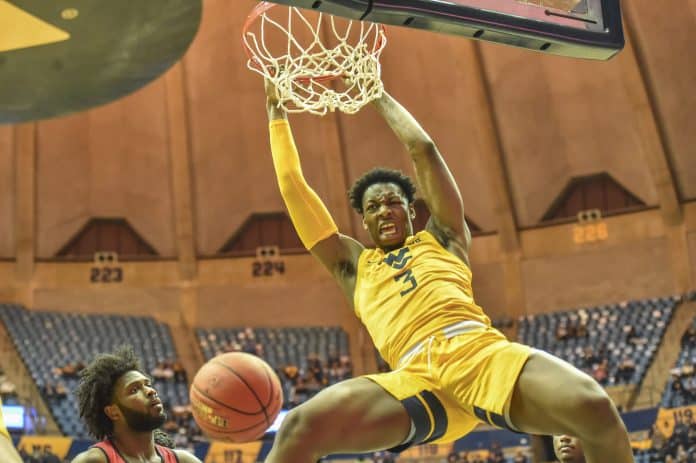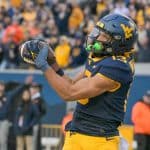
Coming into the season, West Virginia expected to rely on its version of the Twin Towers – forwards Derek Culver and Oscar Tshiebwe – to lead the way back to college basketball relevance.
The Mountaineers No. 3 is turning those Twin Towers into triplets.
WVU coach Bob Huggins and the Mountaineers didn’t even know if Arkansas transfer Gabe Osabuohien would be able to play at all this season. As a transfer, NCAA rules mandated Osabuohien redshirt his first season with WVU.
But, following last season, Arkansas fired coach Mike Anderson. Because the Razorbacks had a coaching change, Osabuohien and WVU petitioned the NCAA for a waiver on the redshirt requirement. Shortly before the season, it was granted and Osabuohien joined what has turned out to be a very deep Mountaineers roster.
Osabuohien started slowly, playing less than 21 minutes in his first seven games. But as he learned Huggins system, he ingrained himself more and more into the rotation.
Osabuohien’s defensive effort and overall intensity provided a spark every time Huggins put the junior on the floor. As his comfort level grew, so did his contribution as a Dennis Rodman like defender and rebounder. By the time Big 12 play started, Osabuohien was established as the Mountaineers top front-line player off the bench.
Now, with conference play more than one-third of the way complete, Osabuohien is even more than that.
Through the first 16 games of the season, Osabuohien didn’t score more than four points in any game. In his last four, he’s scored 10, nine, two and 15. The hustle and effort that paid such dividends on the defensive end is now producing important offensive contributions.
Osabuohien’s best game was his most recent one, where he had a career-high 15 points and played a team-high 29 minutes in WVU’s 89-81 loss at Texas Tech. It didn’t result in a victory against Texas Tech, but Osabuohien showing he has the ability to also contribute as a scorer gives Huggins a safeguard if Culver and/or Tshiebwe miss significant minutes to foul trouble.
Huggins deserves a ton of credit for both finding Osabuohien and pulling this kind of production from the Toronto native. In his two years at Arkansas, Osabuohien’s play didn’t indicate this kind of contribution. Osabuohien averaged just 2.4 points and 2.5 rebounds a game for a mediocre Razorback squad.
His WVU numbers aren’t significantly better – 3.4 points and 4.5 rebounds a game – but those stats belie his more recent play. In his last three Big 12 games, Osabuohien is averaging 11.3 points and 5.0 rebounds. Every indicator shows Osabuohien’s arrow pointing up each game as he further ingrains himself into the Mountaineers rotation.
Culver and Tshiebwe continue anchor WVU’s post-centric strategy. But Osabuohien is making the post three’s company for the Mountaineers and three’s a crowd for their opposition.






